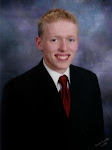Flag -

Capital City - Port of Spain (Jon lives near here)
Government - Parliamentary Republic
President - George Maxwell Richards
Prime Minister - Patrick Manning
Currency - Trinidad and Tobago dollar (TTD)
Ethnic groups - Africans, Indians, Venezuelans, Spaniards, French Creoles, Portuguese, Chinese, Britons, Lebanese, Syrians, Caribs, and Italians.
Official Language - English, but the main spoken language is a dialect which reflects the Spanish, Indian, African, and European heritage of the nation and is spoken by all Trinidadians regardless of ethnicity.

The Republic of Trinidad and Tobago is an archipelagic state (a chain or cluster of islands) in the southern Caribbean, which is northeast of the South American country of Venezuela and south of Grenada in the Lesser Antilles. It shares maritime boundaries with other nations including: Barbados to the northeast, Guyana to the southeast, and Venezuela to the south and west. The country covers an area of 1,980 square miles and consists of two main islands, Trinidad and Tobago, and numerous smaller landforms. Trinidad is the larger and more populous of the main islands. Tobago is much smaller and comprises about 6% of the total area and 4% of the population. It lies outside of the hurricane belt.
Unlike most of the English-speaking Caribbean, Trinidad and Tobago's economy is primarily industrial-based, with an emphasis on petroleum and petrochemicals. It is the wealthiest independent Caribbean country, boasting a high standard of living and high literacy rates. Tourism is the mainstay of the economy of Tobago, and the island remains a favorite destination for many European tourists and is often referred to as "the jewel of the Caribbean. Trinidad and Tobago as a whole does not rely heavily on tourism as a source of revenue.
Trinidad and Tobago is famous for its pre-Lenten festival known as Carnival and as the birthplace of steelpan, calypso & soca (musical styles), and limbo.
Click here for steel pan music on YouTube.
History:
Both Trinidad and Tobago were originally settled the by Amerindians of South American origin. Trinidad was first settled at least 7,000 years ago, making it the earliest-settled part of the Caribbean. At the time of European contact Trinidad was occupied by various groups.
Christopher Columbus encountered the island of Trinidad on July 31, 1498. He named Trinidad after the Holy Trinity. Columbus reported seeing Tobago, which he named Bella Forma, but he did not land on the island.
Trinidad:
In the 1700s, Trinidad belonged as an island province to the vice royalty of New Spain along with modern Mexico and Central America. Trinidad in this period was still mostly forest and was populated by a few Spaniards with their handful of slaves and a few thousand Amerindians.
In the 1780's Trinidad was considered underpopulated so a Frenchman living in Grenada was able to obtain a "Cédula de Población" from the Spanish King Charles III. This law granted free lands in Trinidad to Roman Catholic foreign settlers and their slaves who were willing to swear allegiance to the Spanish king. The land grant was thirty two acres for each man, woman and child and half of that for each slave. As a result, Scots, Irish, German, Italian, and English families arrived. The population of Port of Spain increased from under 3,000 to 10,422 in five years and the inhabitants in 1797 consisted of mixed-races, Spaniards, Africans, French republican soldiers, retired pirates, and French nobility.
General Sir Ralph Abercromby and his squadron sailed through the Bocas and anchored off the coast. The Spanish Governor Chacon decided to capitulate without fighting. Trinidad became a British crown colony, with a French-speaking population and Spanish laws. This led to an influx of settlers from England and the British colonies of the Eastern Caribbean. After the abolition of slavery and the collapse of the French planters' cane economy, the 'French Creole' planters and the peasant population of mixed Spanish-Amerindians turned to cocoa cultivation. Although originally a sugar colony, cocoa dominated the economy in the late nineteenth and early twentieth century. After the collapse of the cocoa crop (due to disease and the Great Depression) petroleum increasingly came to dominate the economy. The Depression and the rise of the oil economy led to changes in the social structure. By the 1950s oil had become a staple in Trinidad's export market and was responsible for a growing middle-class.
Tobago:
The Dutch and Courlanders (from modern-day Latvia) had established themselves in Tobago in the 16th and 17th centuries and produced tobacco and cotton. Tobago changed hands between the British, French, Dutch, and Courlanders. Britain consolidated its hold on both Trinidad and Tobago during the Napoleonic Wars, and they were combined into the colony of Trinidad and Tobago in 1889. As a result of colonial struggles, Amerindian, Spanish, French, and English names are all common in the country. African slaves and Chinese, Indian, and free African indentured labourers, as well as Portuguese supplied labour in the nineteenth and early twentieth century. Emigration from Barbados and the other Lesser Antilles, Venezuela, Syria, and Lebanon also impacted on the ethnic make-up of the country.
Trinidad and Tobago became an independent nation from the United Kingdom in 1962. American military bases in Chaguaramas and Cumuto in Trinidad during World War II profoundly changed the character of society. Trinidad and Tobago is one of the most prosperous and stable democratic nations in the Caribbean.
